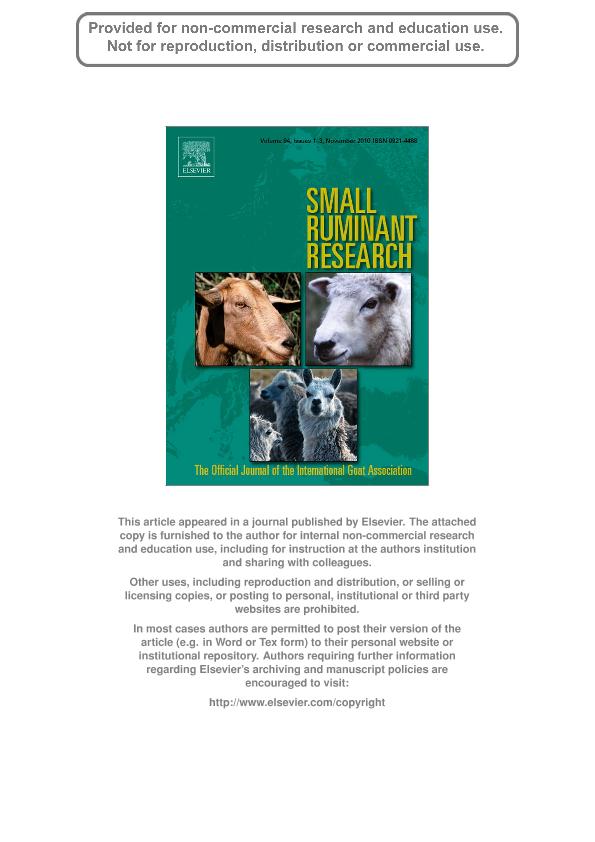Artículo
Characterization of biochemical changes during ripening in Argentinean sheep cheeses
Fecha de publicación:
05/2010
Editorial:
Elsevier Science
Revista:
Journal of Small Ruminant Research
ISSN:
0921-4488
Idioma:
Inglés
Tipo de recurso:
Artículo publicado
Clasificación temática:
Resumen
In recent years, there has been an increase in the production of sheep milk in our country, which has been used mainly in cheese-making. This production, however, is not well standardised, as there are neither defined protocols nor well-characterised products for this procedure. Previously, different methodologies for making two types of sheep cheeses were developed at our institute. In the present work, the levels of free amino acids, organic acids, free fatty acids and volatile compounds for these sheep cheeses were studied in order to thoroughly characterise them. Therefore, we have produced two types of cheeses: one using a starter of Streptococcus thermophilus, in which the curd was cut into 5-mm pieces, washed and then heated to 43 ◦C (S cheeses); the other one using a mixed starter composed of S. thermophilus, Lactobacillus helveticus and Lactobacillus bulgaricus, in which the curd was cut into smaller pieces, was not washed and was heated to 47 ◦C (L cheeses). These cheeses were analysed at 2 and 180 days of ripening. Free amino acids (FAAs) and organic acids were studied by HPLC, free fatty acids (FFAs) were quantified by GC and volatile compounds were analysed by SPME-GC-FID/MS. The concentrations of all FAAs were significantly higher in the L cheeses than in the S cheeses, and this was evident from the beginning of the ripening. Both types of cheeses showed similar changes in the concentrations of some FAAs during ripening, but S cheeses were characterised by higher percentages of Phe, Leu and Val, while L cheeses had higher percentages of Pro, Ile, His and Asp. Lactic and citric acid were the most important organic acids present in both types of cheeses. At the end of the ripening, L cheeses presented higher levels of succinic and formic acids, while S cheeses showed a much higher amount of acetic acid. The levels of FFAs increased during ripening, and myristic, palmitic, stearic and oleic acids were the most abundant ones in both types of cheeses. L cheeses showed significantly higher levels of all FFAs at the end of the ripening and presented a greater increase in the percentages of short-chain fatty acids during ripening compared to S cheeses. Regarding volatile compounds, higher levels of aldehydes and ketones characterised the L cheeses, whereas S cheeses had higher proportions of esters and alcohols. Both types of cheeses presented similar areas in the most compounds of acids group, but the levels of butanoic and hexanoic acids were significantly higher in S cheeses than in L cheeses. The results of the present work offer an important contribution to this field: they have provided a better understanding of the changes that occur during the ripening of the two sheep cheeses manufactured with technologies developed in our group. These technologies could also be used by small sheep farm producers located in our region with the aim of increasing the economic yield of their products.
Archivos asociados
Licencia
Identificadores
Colecciones
Articulos(INLAIN)
Articulos de INST.DE LACTOLOGIA INDUSTRIAL
Articulos de INST.DE LACTOLOGIA INDUSTRIAL
Citación
Bergamini, Carina Viviana; Wolf, Irma Veronica; Perotti, Maria Cristina; Zalazar, Carlos Antonio; Characterization of biochemical changes during ripening in Argentinean sheep cheeses; Elsevier Science; Journal of Small Ruminant Research; 94; 5-2010; 79-89
Compartir
Altmétricas




